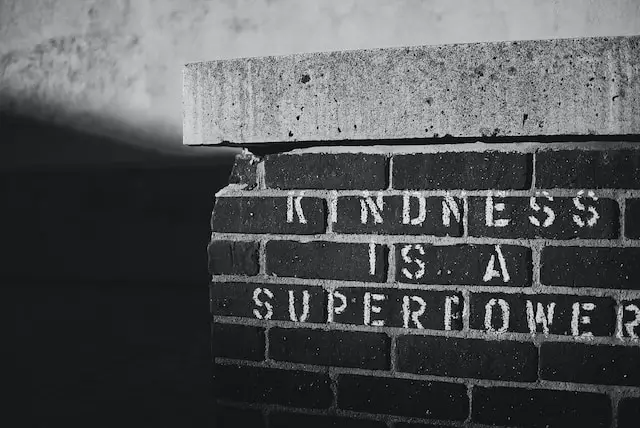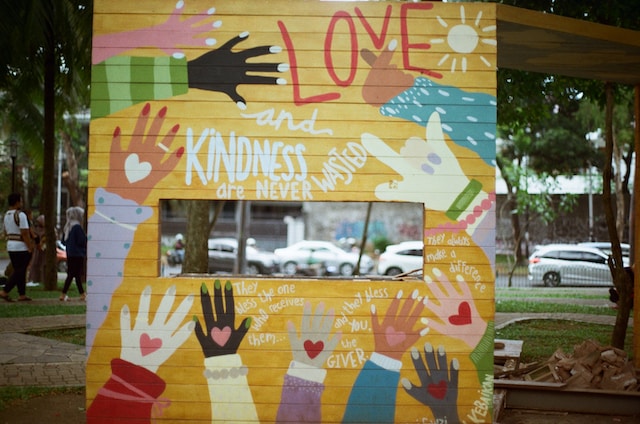Kindness and pity may seem similar at first glance, but they are vastly different. Kindness comes from a place of empathy and understanding, while pity stems from a sense of superiority or condescension towards others. While being kind can have positive effects on both the giver and receiver, feeling pity can lead to negative emotions like guilt or shame.
The definition of kindness
(Photo by Andrew Thornebrooke on Unsplash )

Kindness is the act of showing concern, care, and compassion towards others. It involves being considerate and empathetic to people’s needs regardless of their status or background. Kindness can take many forms, from a simple smile to offering help when it’s needed the most.
At its core, kindness is about treating other people how we would like to be treated ourselves. It’s about putting ourselves in someone else’s shoes and responding with compassion rather than judgment or criticism.
Practicing kindness has been shown to have numerous benefits for both the giver and receiver. Studies have found that acts of kindness can boost our mood, increase feelings of happiness and well-being, lower stress levels, reduce symptoms of depression and anxiety, improve relationships with others as well as lead to greater life satisfaction overall.
In essence, kindness isn’t just an action; it’s a mindset that requires us to look beyond ourselves and extend love towards those around us. By practicing kindness every day – no matter how small – we can make a big difference in the world around us.
The definition of pity
(Photo by Lucas Pezeta)

Pity is often viewed as a negative emotion, but it can also be seen as an expression of empathy and compassion. At its core, pity involves feeling sorry for someone who is suffering or struggling in some way.
However, unlike kindness, which involves taking action to alleviate someone’s suffering or improve their situation, pity tends to be more passive. Pitying someone may involve offering sympathy and support, but it doesn’t necessarily lead to concrete steps being taken to help them.
Moreover, there is often a sense of superiority or condescension associated with pity. When we feel sorry for someone else we are implicitly placing ourselves in a position of power over them – as if we are somehow better off than they are.
While genuine expressions of concern and compassion for others are important aspects of our humanity, it’s important to recognize the limitations and potential pitfalls of pity. Instead of merely feeling sorry for those who are struggling around us, let’s focus on actively helping them find solutions to their problems wherever possible.
Kindness Vs. Pity – Key differences
Kindness and pity may seem similar at first glance, but they are actually quite different. Kindness is a genuine desire to help others without expecting anything in return, while pity is more about feeling sorry for someone and offering assistance out of obligation or guilt.
When we show kindness towards others, we do so because we genuinely care about their well-being. We want to make them feel valued and supported, even if it means inconveniencing ourselves in the process. This type of selfless behavior can have a profound impact on both the giver and receiver.
Pity, on the other hand, often comes from a place of superiority or condescension. When we pity someone, we see them as inferior or helpless and feel obligated to offer assistance simply because it’s expected of us. This type of behavior can be harmful as it reinforces negative stereotypes and can lead to feelings of resentment from those being pitied.
Another key difference between kindness and pity is how they make people feel. Kindness has been shown to increase happiness levels in both the giver and receiver by releasing endorphins that promote positive emotions. Pity, on the other hand, can often leave people feeling ashamed or embarrassed by drawing attention to their perceived weaknesses or shortcomings.
While kindness and pity may seem similar at first glance, they are fundamentally different in terms of motivation, impact on others’ well-being, and emotional effects. By recognizing these differences and striving towards genuine acts of kindness rather than misguided attempts at offering pity-based support, we can all work towards creating a more compassionate world where everyone feels valued for who they are rather than what they lack.
Examples of kindness
Kindness can be observed by simple gestures or grand acts of thoughtfulness. It requires empathy, selflessness and a genuine desire to help others without expecting anything in return. Here are some examples of kindness that can inspire us:
Small acts of kindness such as holding the door for someone, giving up your seat on public transportation or smiling at a stranger can make someone’s day brighter.
Volunteering your time and skills to those in need is another example of kindness. You could volunteer at a local food bank, donate blood or assist senior citizens with their daily tasks.
Supporting friends and loved ones through difficult times shows great kindness. Listening attentively when someone needs to talk, offering words of encouragement or simply being present can go a long way towards making them feel supported.
Paying it forward is also an act of kindness that spreads positivity throughout the community. Buying coffee for the person behind you in line at Starbucks or leaving coins in expired parking meters are just two examples.
Ultimately, there are countless ways to show kindness towards others!
Examples of pity
Examples of pity can be found in many situations and contexts. It’s when we feel sorry for someone because they are going through a tough time or experiencing some form of suffering. This feeling can often stem from a sense of superiority, where we view ourselves as being “better off” than the person we’re feeling pity towards.
One example of pity could be when we see someone living in poverty and feel bad for them because they don’t have the same opportunities that we do. While this may seem like a compassionate response, it can actually lead to feelings of guilt and shame on the part of the person receiving our pity.
Another example is when someone has experienced a loss or setback, such as losing their job or failing an exam. We might offer sympathy and support, but if we begin to treat them differently out of pity, it can make them feel even worse about themselves.
Pity can also manifest in interpersonal relationships where one person feels sorry for another due to perceived weaknesses or shortcomings. This kind of attitude often leads to condescension and patronizing behavior, which only serves to reinforce negative self-images.
In short, while pity may seem like kindness at first glance, it often comes with unintended consequences that do more harm than good in the long run. Instead, focusing on empathy and understanding without judgment can help us build stronger connections with others based on mutual respect rather than feelings of superiority.
The benefits of being kind
Being kind to others is one of the most rewarding and fulfilling things a person can do. Not only does it make you feel good about yourself, but it also benefits those around you. Here are some of the benefits of being kind:
Firstly, kindness can improve your relationships with others. When you show kindness towards someone, they are more likely to reciprocate that kindness back to you. This creates a positive cycle where both parties benefit from each other’s generosity.
Secondly, being kind can boost your confidence and self-esteem. When you act in a way that is beneficial for others, it reaffirms your own sense of worth and value as a person.
Thirdly, showing kindness has been linked to improved physical health outcomes. Studies have shown that people who engage in acts of kindness on a regular basis experience lower levels of stress and anxiety.
Being kind allows us to contribute positively to our communities and society at large. Small acts of kindness can have ripple effects that impact countless people over time.
There are numerous benefits associated with practicing kindness towards yourself and others – from stronger relationships to better physical health outcomes – making this practice an incredibly worthwhile pursuit!
The dangers of feeling pity
Feeling pity towards someone may seem like an act of kindness, but it can actually lead to more harm than good. When we feel pity for others, we are assuming that they are unable to help themselves and need our assistance. This assumption can be damaging as it takes away their agency and independence.
Furthermore, feeling pity towards someone can also create a power dynamic where the one who pities is in a position of superiority. This creates feelings of shame and humiliation in the person being pitied, further perpetuating harmful stereotypes.
Another danger of feeling pity is that it often leads to temporary acts of kindness instead of long-term solutions. By simply providing immediate relief without addressing the root cause of the problem, we may inadvertently reinforce cycles of poverty or dependence.
Moreover, when people feel pitied by others, they may develop feelings of resentment or anger towards those who offer help. As humans, we all have a natural desire for dignity and respect which cannot be met through mere acts of charity.
While feeling pity may seem like a way to show compassion towards others; in reality- its consequences outweigh any benefits that could arise from this emotion.
Featured Image By – Ditto Bowo on Unsplash








